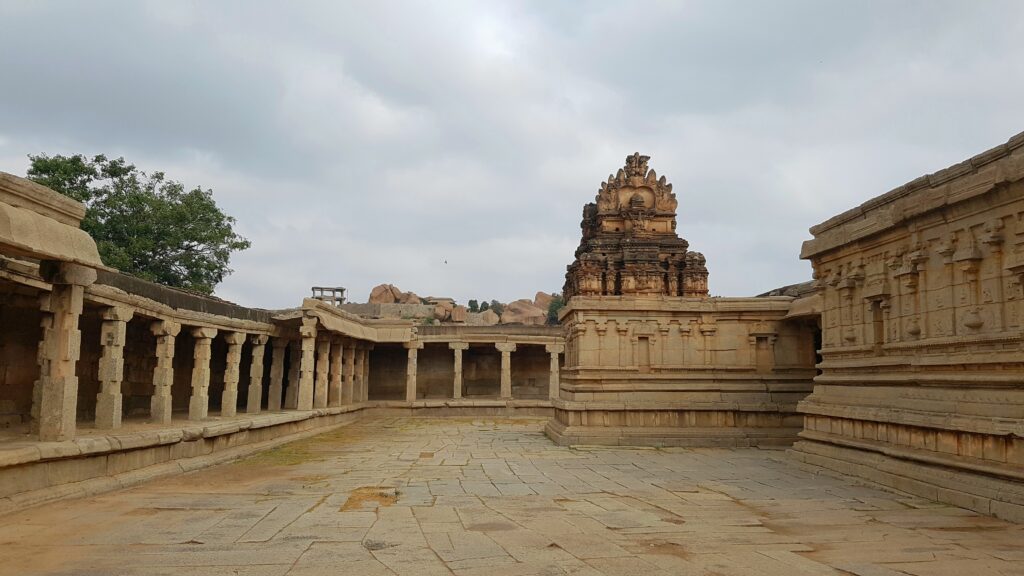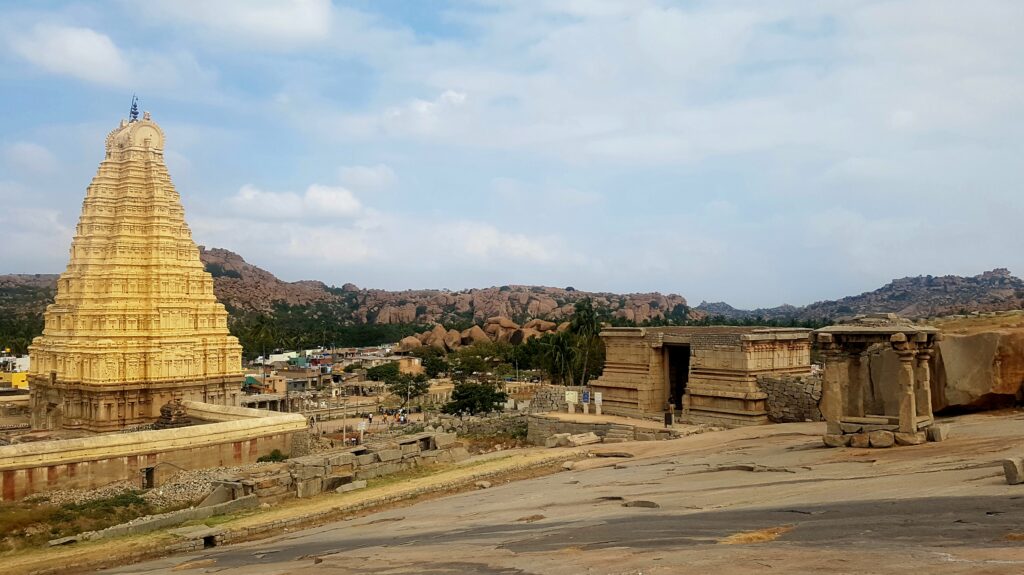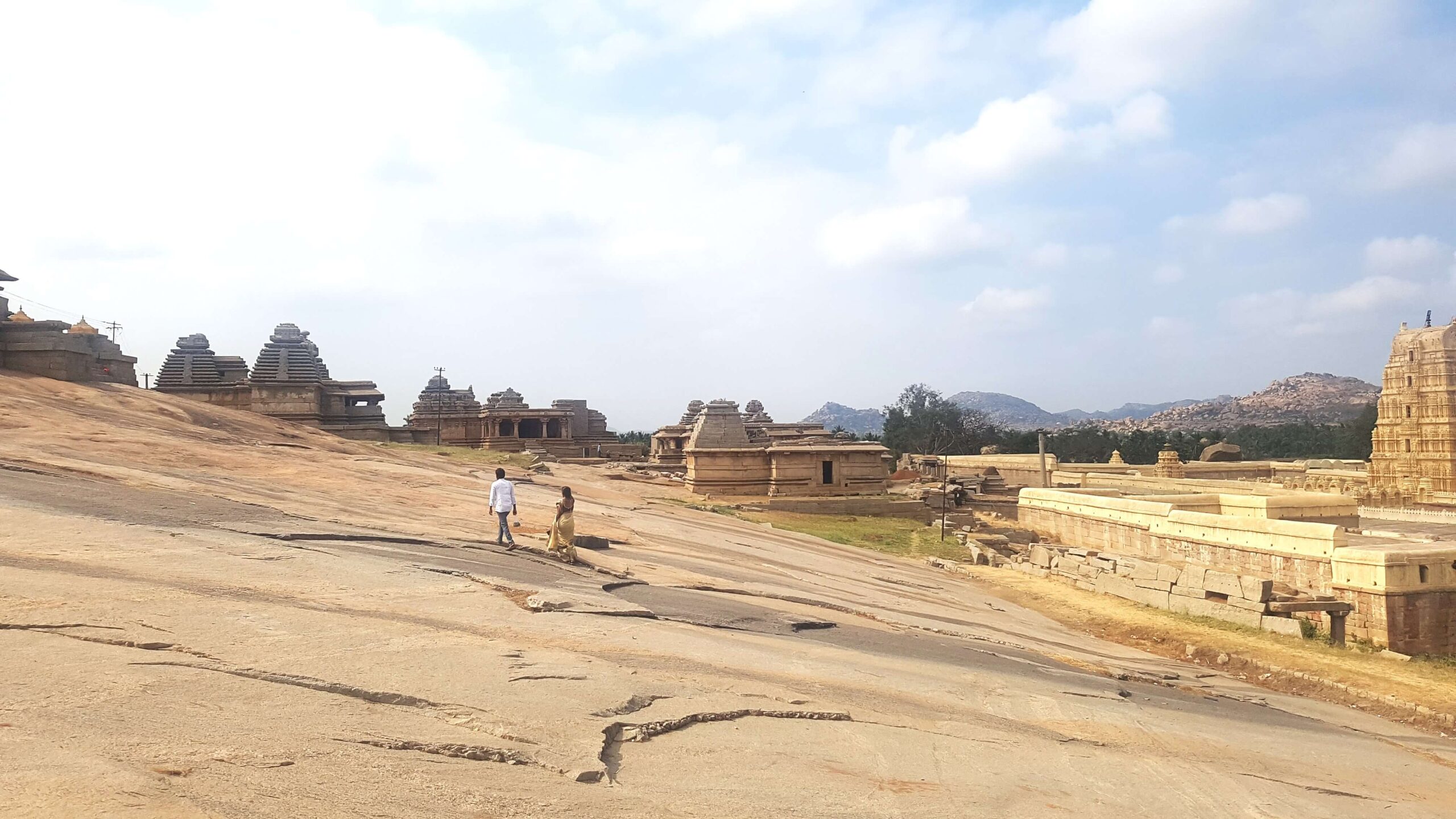Beauty in Destruction
Hampi - a place that spreads out a message that beauty has a different meaning for even destruction, and a place where the leftovers after destruction centuries ago are equally important at present for tourism and research alike, is what Hampi can be described as. From the boringly lengthy history lessons from school, only very few things remain in the memory after many years, and the term “Vijaya Nagara Empire” may top the list.

After a visit to Hampi, there was no doubt because that topic was so special in the history class. While being in Hampi, or the City of Ruins, as it is normally known, one may wonder about the beauty that exists in a ruined cityscape spread across a large area, and can only ponder over how marvelous it would have been when it had its life and blood many centuries ago.
The Great Vijayanagara Empire
While many of the tourist locations in India may feast on natural beauty, Hampi will throw open an entire history book to the visitors. If tourist locations across India can be compared to sports, Hampi will look like a Test match, while others can be just 20-20 or one-day matches. The depth and magnitude of abandoned structures lying across a distance that is to be measured in square kilometers is nothing but a revelation of grandiose, meticulous planning and execution to its pristine details, which includes an aqueduct made with stones of a great kingdom ruled many centuries ago..

Vijaya Nagara Empire, consisting of literally the whole of South India, which means the present-day Karnataka, Tamil Nadu, Andhra, and Kerala, was one of the most powerful kingdoms ruled for over 200 years from 14 to the 16th century. Hampi was the capital of this empire, and it happened to be the last great Hindu Kingdom in ancient India. Stories related to divine connection and this famous place, traditionally known as Pampa-kshetra from Lord Indra, Lord Shiva, and Goddess Parvathy, etc, also have relevance with this place for those who are interested in mythology.
Hampi’s Location and Significance
Hampi is close to the modern city of Hospet on the banks of the river Tungabhadra in Bellary district in the State of Karnataka. It is a UNESCO-certified heritage site spread over 4000 hectares, which means above 25 square Kilometres as per the records. And it was no surprise, as some history books say it was the second-largest city in the world at that time. With forts, temples, water structures, Mandaps, pillared halls, walls that were made for defense, etc, of course, all in ruined or abandoned conditions, it makes every traveler’s mind filled with something special with its uniqueness as compared with many other tourist attractions which are famous for landscape, snowfall, mountains, backwaters, etc.

The present-day ruins of the empire became more significant or powerful than the destruction caused on it, which is evident from the fact that much research has been done here – within the entire destroyed structures to analyse the history, art, culture, religious harmony, etc.
Another aspect of this research was the architectural excellence that has been still on display to visitors even after many centuries. This research was done not only by Indians but mostly by internationally recognized scholars and Archaeologists, and the reports are published through journals and specially titled books.

Exploring Hampi
Since many prime and important structures are spread at different locations within the huge area of Hampi, the only possible way to see all the important locations is to hire a taxi or an auto from the entrance, and there are plenty who double as a guide too, or to hire a guide if one wants to use their own car. They will wait outside after dropping us in each location after giving a brief about the history and importance of the structure or place, or area in detail. The architectural excellence and archaeological significance this place carries are simply extraordinary for any traveller. The fact that it is surrounded by mountains and the beautiful river Tungabhadra adjacent to it only adds to Hampi’s importance, being one of the sought-after destinations for many Indians as well as foreign nationals.
The Majestic Virupaksha Temple
Like the history of India across many ancient locations, temples, and pilgrimage were having a prominent place in the life of the Vijaya Nagara Empire too. Many temples for several Gods, in various sizes, in different shapes, and for diverse faiths were seen across this huge area. The Virupaksha temple, located at the main entry point for tourists, seems to be first and best among them all for its size, glorious look even from a little far away, and grandeur apart from the Divinity it offers.

The temple stands tall and intact amidst the ruins that happened all around many years ago, and is free from being affected by any of the heavy destruction that came its way. It’s a temple for Lord Shiva, and a festival of Chariot is conducted every December, attracting a lot of visitors from nearby locations too, as the festival is famous and popular. The architecture of this temple is simply charming and attractive for all visitors, with its eastern entrance gateway, with an almost 50m height, which looks the greatest among others.
The Kadalekalu Ganesha Temple
The picturesque profile enclosed around Hampi in all directions is marvellous and a feast for the eyes for everyone. At the next location, on the slope of Hemakunta Hill, at a walkable distance from Virupaksha temple, lies another famous and maybe the biggest temple of Hampi.

A gigantic statue of Lord Ganesha of Kadalekalu temple, enveloped in the amazing beauty of Matanga hill and Hampi bazaar, was one of the most notable structures. It was seemingly an imposing view of the great God with 15 feet in height, sculpted from a single huge boulder of stone. Spending some time at this temple and enjoying the surroundings and calm ambiance acted as a booster dose for the following day.
The Vittala Temple and Musical Pillars
Another famous temple with its unique architecture and specially crafted stone pillars is the Vittala temple. The pillars are mentioned as musical pillars. This temple is highly ornamented, claiming to be the most visited and photographed structure within Hampi.

It possesses many famous structures such as musical pillars, Maha Mantapa, Stone chariot, etc. The story of musical pillars is such that it is sculpted out of single-piece resonant stones, which remains a mystery. British rulers tried to find the secret behind these music stones by cutting two stones into pieces to know anything inside, but could not find any, and those stones are still there, visible for visitors as per the legend.
The Iconic Stone Chariot
The stone chariot inside the temple is another centerpiece of attraction or an equally important structure having its own special place in the Hampi’s legacy. It is considered to be a shrine dedicated to the God of Birds, namely Lord Garuda, who is Lord Vishnu’s escort. This is one among the three famous stone chariots in India, the other two being one in Konark in Orissa and the other in Mahabalipuram in Tamil Nādu.

In this vast ruined landscape of Hampi, there is no limit to finding the architectural excellence of that time, as it was one of the most prosperous cities, which was larger than Rome according to some history books. The craftsmanship and Engineering technology that was seen or observed within these ruins were outstanding, to say the least, especially when no technology or computers were available at that time, which may even envy professional Civil Engineers and Architects.
Queen’s Bath – Royal Elegance
Another such structure was an enclosure for the Queen’s bath, one of the most popular locations for the visitors. It is situated close to the Royal enclosures and was a private bathing place for the Kings and the Royal ladies. Queen’s bath is rectangular in shape with a sunken bath area in the centre of the structure. The interesting part of the building is the pillared corridor on all four sides with a beautiful arch and ornamented balconies and windows. Though small in size, it seemed to be an important one as the place was relatively crowded with many people enjoying it by sitting in the windows, balconies, and also with selfies and photoshoots.

Elephant Stables – Grandeur of the Royals
Ever wondered about an elephant stable that may get so many visitors, yes – in Hampi, we could find one. The elephant stable structure, which is not being subjected to heavy destruction like many other buildings, is a must-visit place during the trip to Hampi. The architectural design of this building, that constructed to house the elephants, looks special compared to the other structures within Hampi.

It is huge, with 11 individual rooms with each made for two elephants, and having individual domes for all eleven rooms. At the centre of it is another magnificent, highly decorated dome with its own special importance for onlookers due to its special design. The entire structure of the elephant stable – the house of the then royal elephants of the Vijaya Nagara Empire is long and rectangular in shape. It stands separately in a vast area, looking unique. Light and sound shows are conducted on special occasions here.
Lotus Mahal – Grace in Stone
Buildings in lotus shape were fond of many kings and emperors in ancient times, and not surprisingly, such a structure was in Hampi too, which is known as Lotus Mahal. Looking very special in the way its design is designed and has very limited damage compared with other ruined buildings spread across this once beautiful city.

It is situated inside a large rectangular area in shape enclosed with stone walls and towers at the corners. The towers might have been used as watchtowers. There are some trees within this area that give a cool ambiance, which spreads relief to the visitors, since by the time one reaches this location, it might be too hot due to the climate. It’s also learned that during the evening, it would be lit up and have an interesting look at that time.
Engineering Wonders and Aqueducts
While roaming inside this huge area, it feels that each stone has its own different story to tell. One can only wonder in an ancient era, with no lifting technologies existing then, how much effort has been put into making this kingdom with such marvellous architecture, mostly using stones.

On the way, it has seen lengthy and elevated water transporting arrangements built with stones, in civil engineering terms, it is called an aqueduct, which only shows that the planning centuries ago covered every aspect. Door leaves with stone so huge, with above 20 to 25 cm thickness were also lying by the side of the ruins, showing the skill of sculptors and designers of those times.
King’s Audience Hall
Another important structure spread over a vast area was namely King’s audience. It looks similar to the remnants of an auditorium, as the name says. A raised platform at the end, from where the destroyed area is visible as an endless kingdom with many other ruins all around.

It was supposed to be a two-storied building where a tunnel-like opening was available at one end through which visitors could walk to the other side. The building was heard to have stone pillars all around, part of which are still lying like a scrambled piece arranged in an order.
A Self-Sustaining Kingdom
The extensive physical features in the form of temples and shrines, malls, parts of water transporting arrangement, doors made with stones of huge sizes, roadways, unique bath area, underground temple, remaining’s of fortresses and defence walls, and other structures visible across this heritage site are let alone marvellous but a reflection of the far-sighted vision, planning, and success of rulers of that time in making the capital city and hinterlands of this empire a self-sustainable kingdom. It was also evident from these structures and other descriptions that the city also had arrangements to protect from any type of attack from enemies.
Want to explore another story from a 1,000-year-old Indian city? Click here to begin.
Click here for Wikipedia details on Hampi
Travel Information
📍 Location
Hampi is located in the Bellary district of Karnataka, on the southern banks of the Tungabhadra River, about 13 km from Hospet town.
🚗 How to Reach
By Air:
The nearest airport is Jindal Vijayanagar Airport (Toranagallu), around 35 km from Hampi. Regular flights connect it to Bengaluru, Hyderabad, and other major cities.
The next closest major airport is Hubli Airport (around 160 km away).
By Train:
The nearest railway station is Hospet Junction (HPT), about 13 km from Hampi, well connected to Bengaluru, Hyderabad, Goa, and Mumbai.
By Road:
Hampi is well connected by road. Regular KSRTC and private buses operate from Bengaluru (340 km), Hyderabad (380 km), and Goa (320 km). Taxis and autos are available from Hospet to Hampi.
🕰️ Best Time to Visit
The best time to explore Hampi is October to February, when the weather is pleasant and ideal for sightseeing.
Avoid the peak summer months (April–June), as temperatures can rise above 38°C.
🏨 Stay Options
You can find stays in both Hampi and Hospet — from budget guesthouses and homestays to boutique resorts and heritage hotels.
Popular options include:
- Evolve Back Hampi – a luxury resort reflecting Vijayanagara architecture.
- Clarks Inn Hampi – a comfortable mid-range choice.
- Shanthi Guesthouse or Gopi Guesthouse – for budget travellers near Virupaksha Temple.
🎒 Travel Tips
- Hire a local guide or auto driver for the best route and stories.
- Carry a hat, sunscreen, and water, as most sites are open and sunny.
- Start early morning to cover major attractions before noon heat.
- Don’t miss sunrise from Matanga Hill and sunset near Hemakunta Hill — both unforgettable.
- Respect temple customs and avoid climbing on fragile ruins.


